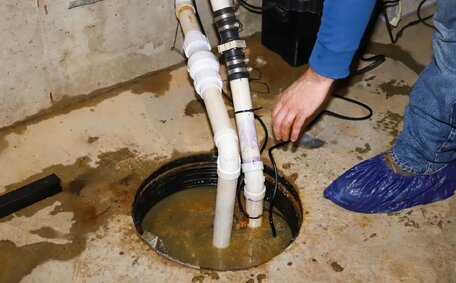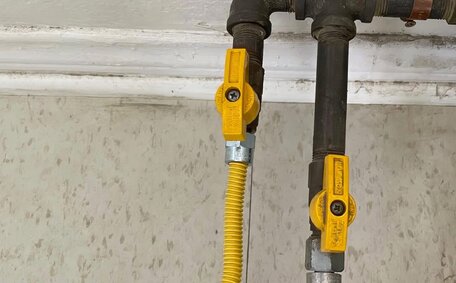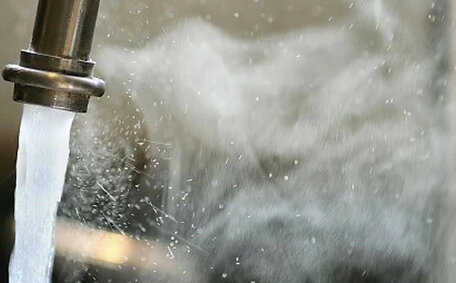Introducing Pipe Materials and Their Emergency Resilience
In emergencies like fires, freezing temperatures, or sudden pressure changes, the durability of plumbing materials is critical. Selecting the appropriate pipe material is key to safeguarding water supplies and minimizing property damage.
This analysis explores how common pipe materials in Kellyville homes and businesses withstand emergency situations. Key materials examined include:
- ABS plastic
- PVC
- PEX
- Copper
- Galvanised steel
- Cast iron
Grasping the pros and cons of each pipe material guides informed choices and supports the installation of durable plumbing capable of enduring emergencies. Preventive measures and strategies to handle frozen pipes will also be covered.
PVC Pipe Vulnerabilities in Extreme Weather
PVC, composed of plastic composites, is a popular choice for Kellyville’s plumbing infrastructure. It offers advantages like corrosion resistance, light weight, easy install benefits, and low cost. However, PVC is vulnerable in extreme weather, with a high risk of failure when water freezes.
PVC pipes may deform under high temperatures, posing risks during heatwaves or fires. If temperatures exceed 140°F, plastic pipes can, despite being resistant to corrosion, progressively soften and risk failure due to low heat tolerance. Unsuitable for high-temperature use, PVC pipes may leach toxins when carrying hot water. PVC also becomes brittle in freezing temperatures, potentially leading to fractures from expanding ice within.
Insulating PVC pipes and using heating tape are effective methods to prevent them from freezing in winter.
It’s important to note that the weaknesses of PVC underscore the necessity of choosing materials tuned to the climate for plumbing installations. For Sydney’s variable climate, hybrid supply lines can incorporate type piping that it’s also suitable for high temperatures, along with other materials, for a robust emergency-ready plumbing system.
PEX Pipe Flexibility in Freezing Temperatures
PEX pipes, known for their cross-linked polyethylene structure, offer notable flexibility and durability, which is especially advantageous in areas experiencing significant temperature variations.
When temperatures drop below freezing and water inside pipes expands as it turns to ice, PEX’s flexibility enables it to withstand the added internal pressure. PEX tubing’s capacity to stretch significantly before bursting offers strong resistance against ice expansion pressure. The expansion of frozen water puts rigid pipes at a greater risk of rupturing, more so than with copper and CPVC.
If PEX pipes do freeze, it’s also crucial to understand how thaw them safely, ensuring the tubing resumes its original shape undamaged. This is a key benefit over metal alternatives. Copper pipe, commonly used for drinking water lines, may incur pinhole leaks, splits, and cracks owing to the expansion and contraction force of thawed water.
For regions like Kellyville that experience occasional plummeting overnight temperatures, PEX’s freeze resistance makes it an ideal supply line. Effectively insulated, PEX pipes maintain water flow and help prevent expensive damage from ice-induced bursts and leaks.
Copper and Steel Pipes in Emergencies
Copper pipe and galvanised steel are pipes used frequently as materials in Kellyville plumbing infrastructures. Both plumbing pipes offer benefits but also have vulnerabilities in emergency situations.
Copper is corrosion-resistant with a high melting point but is vulnerable to weakening from flames over time, affecting the hot and cold water supply. Additionally, its conductivity can result in heat transferring along the water lines.
But when freezing weather strikes, copper pipes have a notorious tendency to burst due to ice expansion pressure.
Meanwhile, stainless steel pipes provide extraordinary fire resistance, remaining intact through extensive flames before finally melting. Their non-combustible nature makes galvanised steel an ideal choice when comes to selecting gas line materials. However, steel has low impact strength, making the pipes highly susceptible to fractures from sudden temperature changes or shifting foundations.
Insulating copper pipes is key to reducing the risks of freezing and leakages during severe cold spells. Steel gas lines ought to include movement accommodations during installation to prevent fractures. Opting for PEX, a non-metallic tubing for water lines, sidesteps temperature-related issues while retaining flood resilience.
Plastic Pipes for Gas Lines
Various types plastic pipe like polyethylene are increasingly used for gas line plumbing. Plastic’s properties, including flexibility, longevity, being resistant to corrosion, and ease of installation, offer clear benefits over traditional pipes such as galvanised steel or rigid copper for gas lines.
Plastic gas pipes satisfy Australian standards (AS/NZS 5601 and AS/NZS 4645) for safety and performance. The approval of polyethylene gas pipe installations confirms plastic’s superiority in maintaining gas containment.
Plastic’s flexibility accommodates ground shifts and contractions from temperature changes. This avoids dangerous fractures in underground gas mains. Maintenance costs are lower, offering financial benefits in the long run as well.
Plastic gas lines demonstrate superior resistance to soil acidity and corrosion over time compared to steel pipes.
To make sure that plastic gas piping delivers reliable, robust, and cost-effective gas flow to your home and businesses in Kellyville, proper certified installation following mandated standards is key.
Concrete Pipes for Fire Resistance
Concrete pipes stand out for exceptional fire resistance during emergencies like bushfires or building blazes. Reinforced concrete can withstand prolonged direct flame impingement up to 2000°F. It will not ignite, melt, burn nor emit toxic fumes.
This unique property allows concrete piping to remain intact even amidst raging wildfires. Concrete manholes along evacuation routes can safely contain critical water infrastructure when catastrophic fires threaten Kellyville communities.
Unlike plastic or metal alternatives which either melt, rupture or emit hazardous gases under extreme heat, concrete water pipes maintain integrity and water flow. Installing non-combustible concrete lines, particularly for exposed above-ground sections near bushland, delivers crucial passive fire protection during emergencies.
Compliant with AS/NZS 4058 standards for pressure and stormwater drainage applications, concrete piping’s unrivalled thermal performance makes it an essential component of fire-conscious plumbing infrastructure for high-risk regions.
Strategies to Protect Pipes
There are several key strategies homeowners and businesses can implement to protect pipes from emergency scenarios:
Insulate Pipes
Protecting your pipes hinges on selecting suitable insulation for exposed pipes to prevent freezing, overheating, and pressure damage. Use quality tubing insulation rated for plumbing applications. Maintain a minimum temperature of 13C during cold spells to stop pipe interiors from freezing.
Install Heat Traces
Wrap pipes with UL-certified heat trace cables. These self-regulating electric systems can easily apply safe warmth to maintain above-freezing temperatures in the pipe your infrastructure relies on. Position traces along the underside of your pipes to maximise heat transfer.
Waterproof Pipe Penetrations
Seal spaces where pipes penetrate walls and ceilings with waterproof silicone. This prevents freezing winds or fires from accessing hidden pipe sections. Use intumescent caulking for fire-rated assemblies.
Anchor Pipes Properly
Codes and Standards for Hazard Installations
It’s crucial to know what plumbing codes and standards to adhere to, ensuring best practices are followed during pipe installation and maintenance in perilous conditions. Key regulations for gas line installations, such as AS/NZS 5601 for gas fittings and AS/NZS 4645 for polyethylene pipe use, must be followed.
Compliance ensures gas systems safely contain and deliver gas despite environmental stresses. Certified installations can provide reduced risks as infrastructure ages or experiences seismic shifts over decades.
For plastics like polyethylene to be approved for hazardous gas line applications, the materials underwent stringent tests. These guarantee material performance under extremes of temperature, pressure, stretching from soil contraction, and gas permeation over time.
Utilising AS/NZS-compliant plastic pipes for gas ensures the infrastructure is robust, illustrating how its important to maintain function in the wake of disasters. We see plastic’s resilience delivering uninterrupted gas heating to homes even amidst wildfires, floods and quakes.
At Kellyville Plumbing, we’re here to guarantee that all your gas fitting needs are catered to with adherence to the latest codes and standards for secure, dependable service. We exclusively use certified gas pipe materials meeting Australian standards.
For the latest gas or water plumbing services, owed to their compliance with hazardous installation regulations, please email or call Kellyville Plumbing to schedule an appointment.






